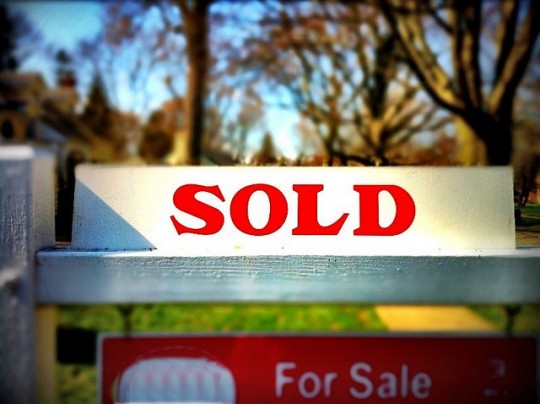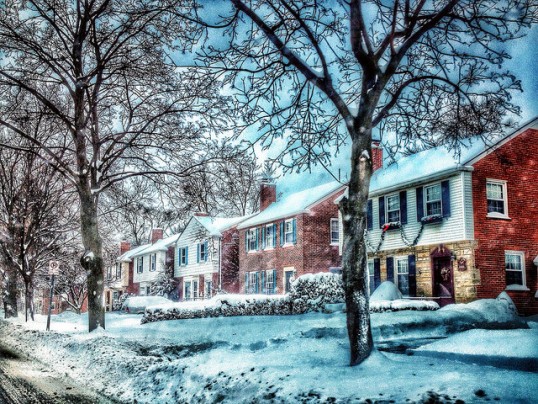The National Association of Realtors’ Pending Home Sales Index is a forward-looking indicator of future existing-home sales that measures the number of contract signings each month. In January, the Index was virtually unchanged, rising 0.1 percent above December’s upwardly revised estimate. Lawrence Yun, NAR’s chief economist, said ongoing disruptive weather patterns across much of the U.S. have inhibited home shopping. Yun believes that weather, combined with low inventory and declining affordability levels, have slowed home sales. But despite slowing this winter, the sales pace is expected to pick up after the first quarter and total existing-home sales are projected to reach over 5 million by the end of the year. Regionally, pending sales rose in both the Northeast and South, while dropping in the West and Midwest. Yun says new home construction may be the key to alleviating inventory issues and taming price growth. The median existing-home price is expected to grow 5 to 6 percent in 2014. More here.
Tag Archive for NAR
Sales of Previously Owned Homes Slip 5.1%
Sales of previously owned homes fell 5.1 percent in January, according to estimates released by the National Association of Realtors. With the drop, last month’s sales pace was the slowest since July 2012. Lawrence Yun, NAR’s chief economist, believes unusual weather played a role in the decline. According to Yun, disruptive and prolonged winter-weather patterns across the country are impacting a wide range of economic activity and housing is no exception. Decreasing sales activity is expected to turn around, however, as the weather warms and the selling season begins this spring. Also in the report, prices continue to rise, with the median existing-home price up 10.7 percent from one year earlier. In part due to limited inventory, price increases are also being driven by a nearly 10 percent year-over-year drop in the number of distressed homes, including foreclosures and short sales, sold during the month. And though inventory has tightened, January’s estimate shows a slight increase from the month before. At the current sales pace, there was a 4.9 month supply of unsold homes available for sale at the end of January, up from 4.6 months in December. A six-month supply is considered healthy for the market and represents an equal balance of buyers and sellers. More here.
December Weather Affects Pending Home Sales
The National Association of Realtors’ Pending Home Sales Index is a forward-looking indicator that tracks contract signings, not closings. The index, which is released monthly, is a predictor of future existing-home sales. In December, the index fell 8.7 percent from November’s downwardly revised total. Lawrence Yun, NAR’s chief economist, said unusually disruptive weather across large stretches of the country forced people indoors and prevented some buyers from looking at homes and making offers. According to Yun, rising home prices and lack of for-sale inventory are also to blame for the poor sales performance in December. Still, existing-home sales are expected to be at about the same level this year as last year, despite the fact that inventory is limited in much of the country. Prices, though still rising, are expected to moderate this year, gaining about 5.4 percent in 2014. More here.
Home Sales Post Strongest Year Since 2006
In 2006 – the final year of the housing bubble – 6.48 million homes were sold. Last year, sales of previously owned homes reached 5.09 million. It was the strongest year of sales since the bubble burst and a 9.1 percent improvement on 2012’s totals, according to new data released by the National Association of Realtors. Lawrence Yun, NAR’s chief economist, said housing has experienced a healthy recovery over the past two years. Existing-home sales have risen nearly 20 percent since 2011, with job growth, record low mortgage interest rates, and a large pent-up demand driving the market, Yun said. Though housing lost some momentum in the fall, sales were up 1.0 percent in December and ended the year near normal, despite limited inventory and disappointing job growth. Total housing inventory at the end of December was down 9.3 percent to 1.86 million homes available for sale, which represents a 4.6-month supply at the current sales pace. Also in the report, the median existing-home price for all housing types was up 9.9 percent from December 2012 at $198,000. More here.
Pending Home Sales Rise In November
The National Association of Realtors’ Pending Home Sales Index increased slightly in November, due to gains in the South and West. The index – which measures contract signings but not closings – was up 2.3 percent in the South and 1.8 percent in the West. The regional improvement offset declines in the Midwest and Northeast. Overall, the index rose 0.2 percent from October. Lawrence Yun, NAR’s chief economist, said the market is flattening. According to Yun, job creation and household formation should lead to a fairly stable level of sales activity in 2014. And, though the final months of 2013 finished on a soft note, the year as a whole ended with the best sales total in seven years. In fact, existing-home sales are expected to total 5.1 million for 2013, which is a 10 percent improvement over 2012. Also in the report, the national median existing-home price for all of this year will be close to $197,300. That’s a 12 percent increase from 2012. More here.
Existing Home Sales Fall 4.3 Percent In November
Sales of previously owned homes fell 4.3 percent in November, according to estimates from the National Association of Realtors. The drop slowed sales to a pace 1.2 percent below last year’s rate, marking the first time in more than two years that sales were below year-ago levels. Lawrence Yun, NAR’s chief economist, said the market is being squeezed by constrained inventory. According to Yun, there is pent-up demand for owner-occupied housing and, though household formation will inevitably burst out, limited supply is slowing the sales pace. It’s also driving price increases. The national median existing-home price for all housing types was $196,300 in November, up 9.4 percent from last year. Median prices are highest in the West, where the median sales price was $284,400. The Midwest had the lowest median price at $151,100. More here.
Pending Home Sales Hold Steady In October
The National Association of Realtors Pending Home Sales Index is an indicator of future home sales based on contract signings, not closings. In October, pending sales slipped 0.6 percent from the month before. Lawrence Yun, NAR’s chief economist, said weaker activity was expected. According to Yun, the government shutdown in the first half of the month sidelined some potential buyers. In fact, a recent survey found 17 percent of Realtors reported delays in October, mostly due to having to wait for potential buyers to have their income verified by the IRS before being approved for a mortgage. Despite the shutdown-related delays, pending home sales rose in the Northeast by 2.8 percent and were up 1.2 percent in the Midwest. Tight inventory in the West led to declines, while the South stayed relatively unchanged from September. Also in the report, annual existing-home sales should be nearly 10 percent higher than last year, totaling just above 5.1 million in 2013. More here.







